Results
-
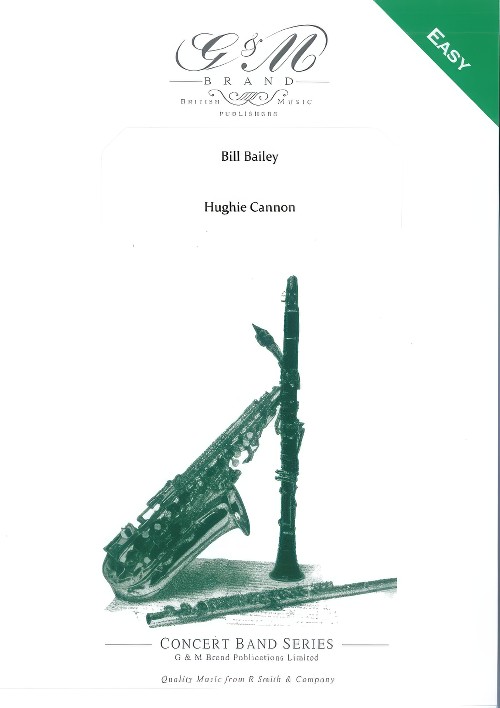 £14.95
£14.95Bill Bailey (Concert Band - Score Only) - Cannon, Hughie - Geldard, Bill
Bill Bailey is an old song made popular in the British Music Halls of the Victorian and Edwardian eras. As a top trombone player and bog band arranger Geldard, Bill has used familiar idioms from the circus march to the jazz waltz to provide a contemporary and entertaining score which will be ideal for any concert.
Estimated dispatch 7-14 working days
-
 £71.28
£71.28Concerto for Drum Set and Concert Band
Feature your drum set player with this exceptional Larry Neeck composition that is a sure showstopper for any concert. Starts with an impressive "rock" section in the style of Sandy Nelson that is full of energy. The second section is a delightful "jazz waltz" which spotlights the use of brushes a la Joe Morello. The finale is a bold up-tempo "swing" section in the style of the late Gene Krupa which is sure to bring down the house! First rate in every respect!
Estimated dispatch 7-14 working days
-
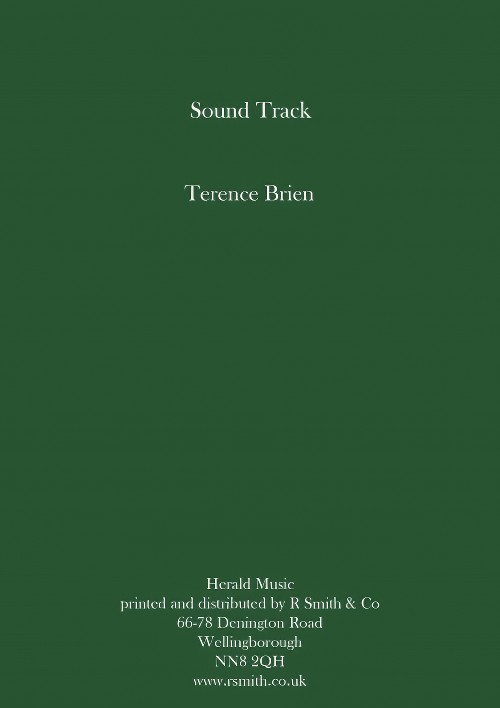 £29.95
£29.95Sound Track (Concert Band - Score and Parts) - Brien, Terence
A delightful Jazz Waltz.
Estimated dispatch 7-14 working days
-
 £113.30
£113.30Moderate Dances - Angelo Sormani
This piece is a tribute to dance music, especially passionate, intense and meditative dance music. "Moderate Dances" is divided into three movements: a "Tango", a "Slow Waltz" and a "Bossa Nova". Each movement and each dance has its own particular characteristics but, when combined, these different rhythmic beats and times give the piece a feeling of completeness and uniformity. The Tango started to flourish in the suburbs of Buenos Aires in around 1880. There is still some doubt as to its origins, which may be Cuban (Habanera) but are probably African. It was most popular in Argentina and Brazil: here the male protagonist was originally the "gaucho" with his inseparable guitar, later to be replaced by the proud, elegant "compadre". By around 1910 the Tango had spread to Italy and France. New clubs opened, where the upper classes could watch and dance the Tango. Here the dance also underwent some rapid transformations. The exaggerated and extravagant gestures and body movements disappeared. Slow, gliding steps replaced the old rotational movements. The women's red ankle-boots and the partners "staring into each other's eyes" accentuated the erotic nature and sensuality of this dance. So much so that, in 1913, the German government banned soldiers from dancing the Tango. Those who broke the law were immediately discharged from the army. From a strictly musical perspective, the basic instruments were a flute, a harp (the diatonic harp typically played by the Indians of Paraguay) and a violin, or flute, guitar and violin or even clarinet, guitar and violin. These instruments were easy to transport, ideal for playing at parties, in the streets and in courtyards. The musicians played by ear, frequently improvising: there were no scores, no records, which is the main reason why it is impossible to trace the Tango back to its exact origins. However, the Tango's evolution (and growing popularity) was once again fostered by its fundamental ability to absorb "other" cultures, languages and sounds. And it was the arrival of the "bandoneon" (an accordion-like instrument that was invented in Germany and brought to Rio de la Plata by some immigrant), which replaced the flute, that marked the beginning of the Tango's huge success outside Argentina. A number of talented composers, above all the great Astor Piazzola (1921-1992), transformed the bandoneon from a simple accompanying instrument to a solo instrument that was to become the distinguishing feature of the 20th century Tango. The Slow Waltz originated from the Waltz, the typical dance of the Bavarian and Tyrolese peasants in the 1700s. It was composers like Johann Strauss, father and son, who carried the Waltz to its zenith in the 1800s, creating the sensual and melancholy yet joyful and charming dance we are all familiar with. When the Waltz first became popular in Germany, the members of respectable society were shocked at the closeness of the dancing partners, who had always previously danced apart. The main difference between the Waltz and Slow Waltz is that the latter has a slower, more expressive rhythm: the men wear tails and the women wear ball gowns decorated with beads and feathers and couples dance in graceful rotational movements. "Bossa Nova" is the title of the last movement in the piece. Jobim, the great Brazilian musician, described this musical genre as a combination of modern Jazz and Samba. Bossa Nova means "new wave". This was the name of the artistic and musical movement that evolved in Brazil in the late Fifties and was extremely popular throughout the Sixties. The songs are usually about love or social matters, drawing inspiration from the slums of Rio De Janeiro and the lives of their inhabitants. Bossa Nova, with its original compositions and the artistic talent of its musicians, also became hugely popular in the United States and Europe, and top Jazz musicians (Ella Fitzgerald, Stan Getz, Bob Cooper, Charlie Bird, Sonny Rollins, Dexter Gordon, Dizzy Gillespie) started to include Bossa in their repertoires.
Estimated dispatch 7-14 working days
-
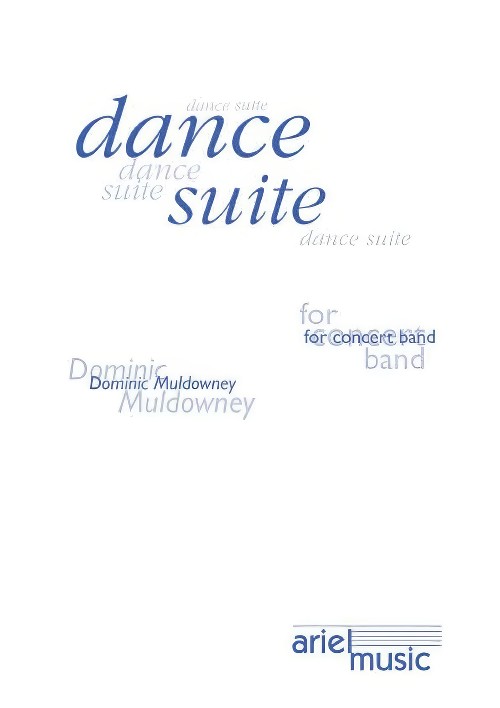 £160.00
£160.00DANCE SUITE (Concert Band) - Muldowney, Dominic
Includes:1. Hey2. Pavane/Waltz3. Polka4. Waltz/Galliard5. Tangos6. Break-DanceDance Suite displays a variety of historical dance forms from a twentieth century viewpoint. The six dances move forward historically from the ancient Hey, through Waltz and Polka, to the sophisticated Tango and the jazz tradition. The rhythm that typifies each dance is constantly under attack, sometimes from a different dance style altogether. These intrusive elements are most obvious in the final dance and prompts the double meaning of the title.I. HEYHey is constructed like a mediaeval motet, where the main blocks of material are rhythmically unconnected to one another. The percussion is the most disconnected of all and seems to have arrived from a Chinese carnival. The scoring alludes to the eight, four and two foot pipes of a baroque organ.I. PAVANE/WALTZAfter a nod in the direction of Dowland's Lachrimae Pavan, the piece seems to wander to and fro between the 16th century and the 19th century world of the Lehr waltz.I. POLKAThe Polka is derived from a four bar fragment found in Stravinsky's sketchbook for The Rite of Spring above which is written: "Dieppe Polka".I. WALTZ/GALLIARDThis is a reversal of the date-shift process in the second movement, in that the wandering goes backwards rather than forwards, particularly to the William Byrd of the Fitzwilliam Virginal Book.I. TANGOSA slow sentimental tango is sandwiched between an abstract deconstructed one, both of which are developed in Dominic Muldowney's opera The Voluptuous Tango.I. BREAK-DANCEBreak-Dance is the fastest, hardest and strangest movement. Its exuberance fractures the texture, which slowly crumbles midway through the movement, only to be resurrected mirror fashion. The piece is a species of palindrome with no true centre, hence: "Break-Dance".Conductors are free to make a selection from these dances for festival or competition programmes, when limited performance time is available.
Estimated dispatch 7-14 working days
-
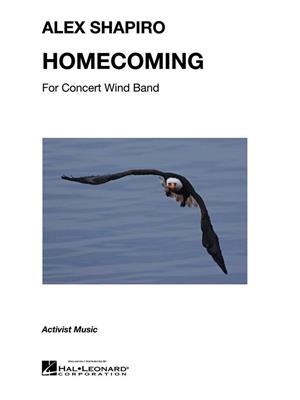 £189.99
£189.99Homecoming - Alex Shapiro
Homecoming is a distinctly American piece of music which ventures emotionally from doubt, to hope, and finally to celebration. The most simple wind instrument of all, the human voice, echoes meaningful homecomings, wherever home may be and from whatever circumstance one returns. Written for the soldiers of the U.S. Army TRADOC Band, Homecoming seamlessly flows between traditional styles that originated in the U.S., from post-minimalist concert music to jazz. As the music grows into a waltz rhythm, welcoming smiles dance with it to the end as loved ones are reunited.
Estimated dispatch 7-14 working days
-
£87.00
Hoe Down -from Rodeo - Aaron Copland
Aaron Copland (1900-1990) has been called the Dean of American Composers. He was one of the first composers to use American folk idioms in his music. Hoe Down is taken from the ballad Rodeo, composed in 1942. From the ballet,Copland extracted Four Dance Episodes to form an orchestral suite for the concert hall: Buckaroo Holiday, Coral Nocturne, Saturday Night Waltz, and Hoe Down. Hoe Down uses the square-dance tunes of Bonaparte and McLeod's Reel.Polyrhtyhms are derived from the jazz idiom - thus, making the work light, humorous, and full of zest. (3:00)
Estimated dispatch 7-14 working days
-
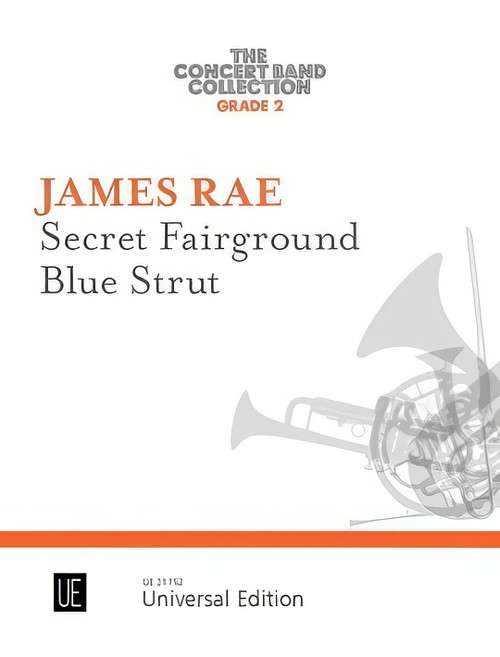 £46.50
£46.50Secret Fairground & Blue Strut (Concert Band - Score and Parts) - Rae, James
James Rae is the man who put fun into woodwind and brass teaching. His many compositions, especially in the jazz and blues idioms, have often featured on examination syllabuses. Recent years have seen his publications of easy flexible ensembles for younger players and now he turns his attention to the wind band. In this series "The Concert Band Collection", he has written exciting new pieces for the standard concert band line up. Attention is given to each instrument so that the technical and musical requirements do not exceed UK Grade 2.5. An optional piano part will provide "stuffing" and moral support for the young players who will quickly enjoy James' catchy and imaginative music. Each volume contains two titles. This one includes the haunting and nostalgic waltz "Secret Fairground" and a dynamic masterpiece called "Blue Strut".
Estimated dispatch 7-14 working days
-
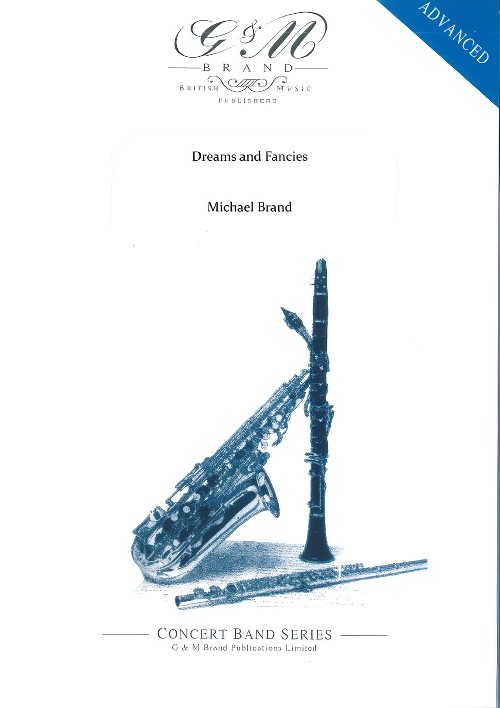 £104.95
£104.95Dreams and Fancies (Concert Band - Score and Parts) - Brand, Michael
The story of a sleepless night, "Dreams and Fancies" uses musical episodes to depict definite pictures: the three accented pulses of the main theme signifying a kind of fate, a demented waltz which breaks down, a love theme in the middle, then a wild jazz party. The end is a huge climax - a grand ceremony in which the lovers marry, but haunted by the three accented pulses of the first theme, representing a dark fate.
Estimated dispatch 7-14 working days
-
 £20.95
£20.95Dreams and Fancies (Concert Band - Score Only) - Brand, Michael
The story of a sleepless night, "Dreams and Fancies" uses musical episodes to depict definite pictures: the three accented pulses of the main theme signifying a kind of fate, a demented waltz which breaks down, a love theme in the middle, then a wild jazz party. The end is a huge climax - a grand ceremony in which the lovers marry, but haunted by the three accented pulses of the first theme, representing a dark fate.
Estimated dispatch 7-14 working days
